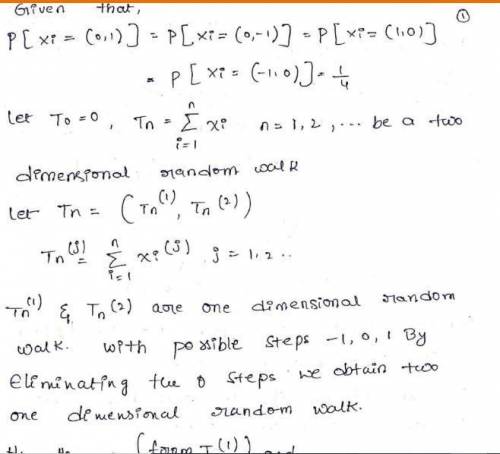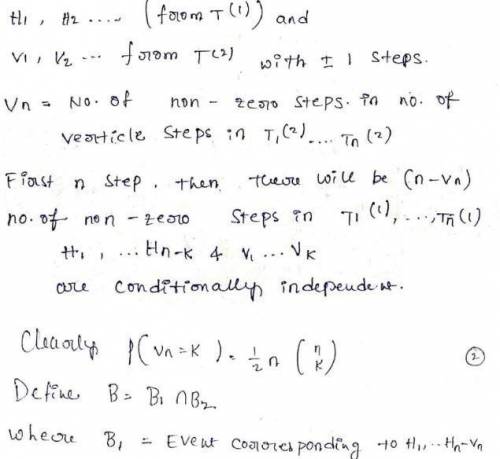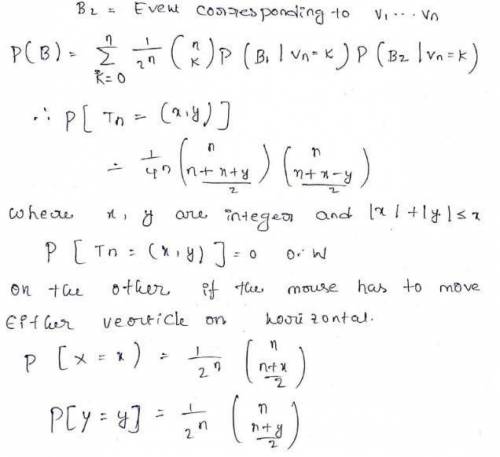
Mathematics, 21.04.2020 16:55 saadizak7098
A mouse walks in a maze that is an orthogonal grid made of corridors that intersect at crossings one foot apart, stopping at every intersection. Using coordinates (with units in feet), it starts at the origin, then moves equally likely up to (0, 1) or down to (0, −1) or right to (1, 0) or left to (−1, 0) by one unit until the next crossing. Then it stops, picks another random direction (up, down, right or left) equally likely and moves by another unit till the next crossing. Every time it stops, its position is a vector (a, b) where both a and b are integers. Scientists let the mouse walk n feet, after which its position is (X, Y ) and it is at distance D from the origin (D = √ X2 + Y 2).
a) What is Cov(X, Y)?
b) Are X and Y independent?
c) What is E(DP)?

Answers: 1
Another question on Mathematics

Mathematics, 21.06.2019 17:20
Aboat costs 19200 and decreases in value by 12% per year. how much will it cost in 5 years
Answers: 2

Mathematics, 21.06.2019 23:30
Plzzz answer both questions and i will give you 100 points
Answers: 1


Mathematics, 22.06.2019 01:00
X^2/100+y^2/25=1 the length of the major axis is: a)5 b)10 c)20
Answers: 3
You know the right answer?
A mouse walks in a maze that is an orthogonal grid made of corridors that intersect at crossings one...
Questions

Mathematics, 09.12.2019 04:31

Biology, 09.12.2019 04:31

Biology, 09.12.2019 04:31




Physics, 09.12.2019 04:31




History, 09.12.2019 04:31

History, 09.12.2019 04:31

History, 09.12.2019 04:31


Mathematics, 09.12.2019 04:31


Biology, 09.12.2019 04:31


Mathematics, 09.12.2019 04:31








